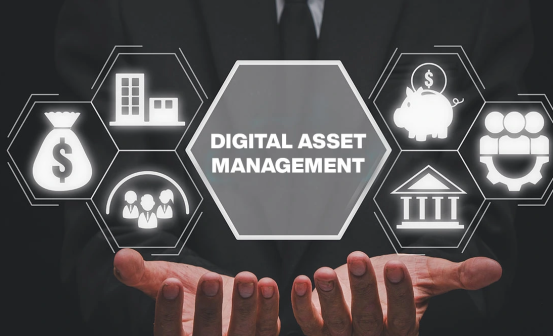In the bustling landscape of modern business, asset management software has emerged as a powerful enabler. Let's delve into how it optimizes operations, safeguards resources, and unlocks growth opportunities across diverse industries.

Introduction to Asset Management Software
Asset management software functions as the linchpin in today's business infrastructure. It's a comprehensive digital solution that empowers organizations to take charge of their assets, be they tangible like machinery, inventory, and buildings, or intangible such as digital data, software licenses, and brand value. By aggregating all asset-related data in one accessible platform, it equips decision-makers with the insights needed to make informed choices. This not only streamlines day-to-day operations but also sets the stage for long-term strategic planning.
Key Features of Asset Management Software
Precise Asset Tracking
At the heart of asset management software lies its asset tracking capabilities. Leveraging technologies like barcodes, RFID tags, and GPS, this feature enables real-time monitoring of an asset's location, status, and movement. Consider a large-scale construction project. With asset management software, project managers can instantly locate heavy-duty equipment like excavators and cranes. This not only minimizes idle time but also enhances overall project efficiency. In a retail chain with multiple outlets, the software can track inventory movement between stores, ensuring stock availability where it's most needed.
Intelligent Inventory Management
Inventory management is another crucial aspect. Asset management software helps businesses maintain optimal stock levels. It tracks inventory turnover, reorder points, and even predicts future demand based on historical data. A clothing retailer, for example, can use the software to analyze past sales trends. This allows them to accurately forecast which styles and sizes are likely to sell well in the upcoming season, thus preventing overstocking or understocking. The software can also automate reorder processes, ensuring that inventory is replenished at the right time.
Proactive Maintenance Scheduling
For physical assets, proactive maintenance is key to extending their lifespan and reducing unexpected breakdowns. Asset management software enables businesses to set up preventive maintenance schedules. It takes into account factors like asset usage, time elapsed since the last service, and manufacturer-recommended maintenance intervals. A transportation company managing a fleet of trucks can use the software to schedule regular oil changes, tire rotations, and engine tune-ups. This not only keeps the vehicles in top-notch condition but also helps avoid costly breakdowns on the road.
Types of Asset Management Software
IT Asset Management Software
IT asset management software is tailored to manage an organization's IT-related assets. This includes hardware components such as desktops, laptops, servers, and networking gear, as well as software licenses. In a large corporate office with thousands of employees, IT asset management software can keep track of all computer hardware, ensuring that devices are up-to- date and compliant with security policies. It also manages software licenses, preventing unauthorized installations and ensuring that the company is in line with software usage agreements. This helps avoid costly legal issues and streamlines IT operations.
Fixed Asset Management Software
Fixed asset management software is designed to handle long-term assets like buildings, land, and industrial machinery. It plays a vital role in asset valuation, depreciation calculations, and regulatory compliance. A manufacturing company with large-scale production facilities can use this software to accurately assess the value of its factories, machinery, and equipment. It also calculates depreciation for accounting and tax purposes, ensuring compliance with financial regulations. Additionally, it helps in tracking maintenance history and future maintenance requirements for these fixed assets.
Digital Asset Management Software
Digital asset management software focuses on managing digital content such as images, videos, documents, and marketing materials. In a marketing agency, this software serves as a central repository for all creative assets. It allows team members to easily search, access, and share digital files, improving collaboration. For example, a graphic designer can quickly find the right image for a new advertising campaign, and the marketing team can ensure that all brand-related digital assets are consistent in style and message. It also helps in version control, ensuring that the latest and approved versions of digital content are used.
Comparison with Competitors (Alternative Management Approaches)
Manual Asset Management
Accuracy: Manual asset management, which involves tracking assets using spreadsheets or paper-based systems, is highly prone to errors. Human data entry mistakes can lead to inaccurate asset records, such as incorrect asset locations or miscalculated inventory levels. Asset management software, on the other hand, automates data collection and entry, reducing the risk of errors.
Efficiency: Manual processes are time-consuming. For instance, manually updating inventory records or scheduling maintenance for a large number of assets can take hours or even days. Asset management software can perform these tasks in a fraction of the time, allowing employees to focus on more value-added activities.
Scalability: As a business grows and the number of assets increases, manual asset management becomes increasingly challenging. Asset management software can easily scale to accommodate a growing asset base, providing real-time data and analytics regardless of the size of the organization.
Stand-Alone Management Tools
Integration: Stand-alone tools for inventory management, maintenance scheduling, or asset tracking may perform their individual functions well. However, they lack the seamless integration that asset management software offers. Asset management software can integrate all these functions into one unified platform, allowing for a holistic view of asset management. For example, data from inventory management can be used to inform maintenance scheduling, and vice versa.
Data Silos: Stand-alone tools often create data silos, where information is trapped within a specific tool and not easily shared with other parts of the organization. Asset management software breaks down these silos, ensuring that data is accessible and actionable across different departments. This promotes better collaboration and decision-making.





